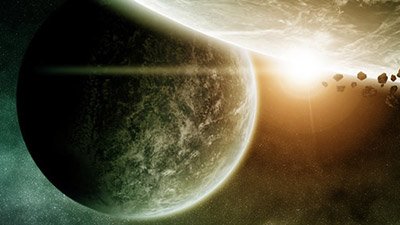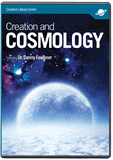
Astronomers Discover Three “Super Earths”
None of them have been named Krypton, but astronomers have identified three “Super-Earths” in a star system 42 light-years from Earth.
News Source
The three planets are rocky and each has a mass between two and ten times that of earth. The star they orbit, named HD 40307, is located near the constellations Doradus and Pictor and is slightly smaller than our own sun. The planets were detected using the High Accuracy Radial velocity Planet Searcher (Harps) spectograph at the La Silla Observatory in Chile.
The scientists also used Harps data to identify 45 other “candidate planets” that likely weigh less than 30 times the mass of earth. According to the team’s report, this implies that one out of every three sun-like stars has such a planet.
One important thing to keep in mind is that astronomers aren’t actually observing these planets directly. Instead, the Harps spectograph measures the subtle gravitational pull a planet exerts on its star during its orbit—which appears to be a tiny “wobble” around the star’s center of mass. Astronomers can then mathematically infer information about orbiting planets.
For many astronomers, the fuel for finding extrasolar planets (also called “exoplanets”) is the by-faith belief that where there’s an earth-like planet (with water, that is) surrounding a sun-like star, life will soon follow if it hasn’t already.
Starting with the Bible, what should Christians think of exoplanets and exoplanetary research? First, we should understand that exploring God’s creation—with the intention of learning about and glorifying God—is fully compatible with the biblical worldview. Astronomy is not a dangerous anti-biblical field unless one begins with anti-biblical presuppositions.
Second, there is the perennial allegation that the vastness of space and the seeming infinitude of other stars, galaxies, and—now it seems—planets must surely mean Christians are wrong in assuming we are the center of God’s plan. Not only does this allegation run counter to Scripture, but accepting it would force us to ask questions like: was Adam not the true center of God’s plan because he was a single human in the vastness of the original earth? Rather than telling us that we are insignificant and unimportant, the size of space is a reminder of how huge God is—so unfathomably beyond us that it boggles our minds to think that He created it all! And it’s there as a reminder each night when we look at the stars.
Further Reading
- The Existence and Origin of Extrasolar Planets
- Extrasolar Planets Suggest our Solar System is Unique and Young
- Get Answers: Astronomy, Alien Life, Origin of Life
For More Information: Get Answers
Remember, if you see a news story that might merit some attention, let us know about it! (Note: if the story originates from the Associated Press, FOX News, MSNBC, the New York Times, or another major national media outlet, we will most likely have already heard about it.) And thanks to all of our readers who have submitted great news tips to us. If you didn’t catch all the latest News to Know, why not take a look to see what you’ve missed?
(Please note that links will take you directly to the source. Answers in Genesis is not responsible for content on the websites to which we refer. For more information, please see our Privacy Policy.)
Recommended Resources

Answers in Genesis is an apologetics ministry, dedicated to helping Christians defend their faith and proclaim the good news of Jesus Christ.
- Customer Service 800.778.3390
- © 2024 Answers in Genesis







